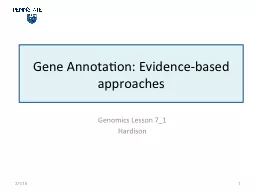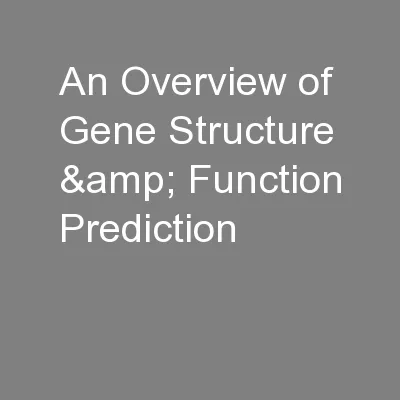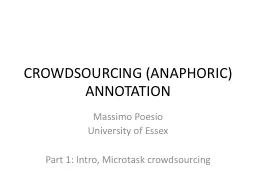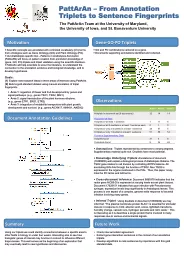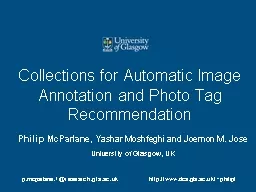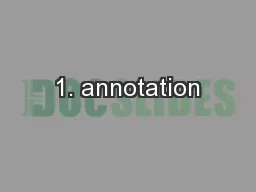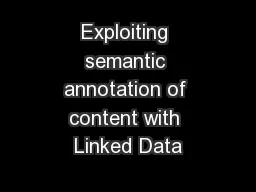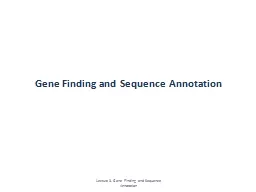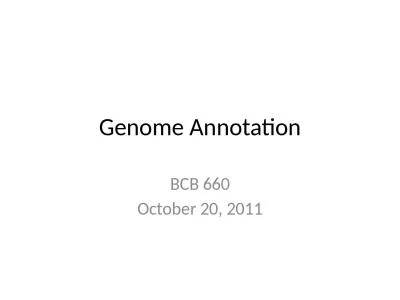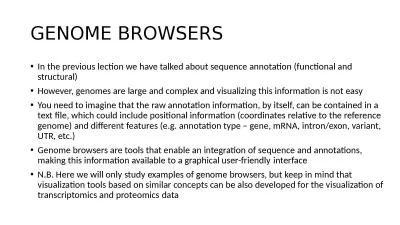PPT-Gene Annotation: Evidence
Author : lucy | Published Date : 2022-05-14
based approaches Genomics Lesson 71 Hardison 3115 1 3 basic approaches to gene predictions Evidencebased Transcribed regions Align to mRNA sequence from the
Presentation Embed Code
Download Presentation
Download Presentation The PPT/PDF document "Gene Annotation: Evidence" is the property of its rightful owner. Permission is granted to download and print the materials on this website for personal, non-commercial use only, and to display it on your personal computer provided you do not modify the materials and that you retain all copyright notices contained in the materials. By downloading content from our website, you accept the terms of this agreement.
Gene Annotation: Evidence: Transcript
Download Rules Of Document
"Gene Annotation: Evidence"The content belongs to its owner. You may download and print it for personal use, without modification, and keep all copyright notices. By downloading, you agree to these terms.
Related Documents

